The Location
Akagera is almost unrecognisable today compared to just 20 years ago when it was on the verge of collapse. In the mid-90’s, lions were hunted to local extinction, rhinos disappeared, and the park’s wildlife was displaced by tens of thousands of long-horned cattle. But upon invitation by the Rwandan Government, African Parks assumed management of Akagera in 2010 in partnership with the Rwanda Development Board (RDB), shifting the park's trajectory to one of prosperity and hope. In 2015, we reintroduced lions after a 20-year absence, and their population has since tripled. And, after years of preparation, 2017 saw the historic return of 18 Eastern black rhinoceros after a 10-year absence, thanks to the support from the Howard G. Buffett Foundation. With poaching essentially halted, the parks key wildlife populations have continued to rise. More than 44,000 tourists visited Akagera in 2018, half of whom were Rwandan nationals, bringing in a record US$2 million in revenue and making the park almost 80% self-sustaining in just eight years.
Learn More
The Translocation
Securing the park: Akagera National Park staff have undertaken years of research, planning and preparation and received training in rhino tracking and monitoring to ensure the best possible outcome for the rhinos in the park. Security measures have also been implemented specifically to ensure the long-term safety and well-being of the rhino population and include an expertly-trained rhino tracking and protection team, a canine anti-poaching unit, and a helicopter for critical air surveillance to enhance the protection of the park.
The Agreement: The European Association of Zoos and Aquaria (EAZA), the Rwanda Development Board, and Akagera Management Company signed an agreement to enable the translocation of the five captive bred rhinoceros to Akagera National Park.
Pre-translocation: Months of extensive planning are undertaken by all partners prior to the translocation to ensure for the wellbeing of the rhinos at every step of the process. The rhinos , which are from Ree Park Safari (Denmark), Flamingo Land (United Kingdom) and Safari Park Dvůr Králové (SPDK, Czech Republic), have spent many months being sensitized at SPDK to allow for a sufficient period of adjustment, monitoring and training in preparation for their journey to Akagera.
The Translocation: The five rhinos will be loaded into individual crates at the Safari Park Dvůr Králové (Czech Republic) and will will be flown from Prague directly to Kigali. Once in Kigali, the rhinos will be transferred from the aircraft onto trucks which will carry them 62 miles to Akagera, where they will be released into specially made enclosures, or bomas, where they can acclimate and be monitored. The rhinos will remain in these bomas for possibly several weeks or months to allow them time to acclimatize to their new environment. A team of veterinary experts and rhino specialists will oversee the entire transit of the rhinos from the Czech Republic to Rwanda, during which the animals will be constantly monitored, and every measure will be taken to mitigate their stress and ensure for their health.
Post Translocation: While the rhinos spend the time in the bomas, they will be chipped for long term monitoring purposes. They will then be released into a 10-hectare sanctuary in the park, where they will continue to be tracked and monitored on a daily basis by a dedicated team ensuring their health and well-being. The sanctuary will separate the five rhinos from the existing rhino population, to give them the time and space needed to adjust to their new home. Over time the five captive-bred rhinos will settle, form natural territories and will start to interact with the existing rhino population.
Planning and Protection
Since assuming management of Akagera National Park in partnership with the Rwanda Development Board (RDB) in 2010, African Parks has overhauled law enforcement and effectively halted poaching. Preparations were made specifically to ensure the long-term safety and well-being of the rhino population, including creating an expertly-trained rhino tracking and protection team, a canine anti-poaching unit, and the deployment of a helicopter for critical air surveillance to enhance protection of the park. In addition, the park utilizes technological innovations, including Vulcan’s EarthRanger and Smart Parks technology to monitor chipped/collared animals on a real-time basis.
To ensure for the best possible outcome for the species in the region, staff have undertaken years of research, planning and preparation, including training in rhino tracking and monitoring. Consultation with experts and specialist groups was undertaken to secure a genetically appropriate and available source of black rhino for reintroduction. In addition, a re-establishment and management plan for black rhino in Akagera was developed in accordance with the metapopulation management programme adopted by the Eastern Africa Community Rhino Management Group.
Sign Up For More Good News
Sign up for the latest email updates about the rhinos returning to Akagera.
